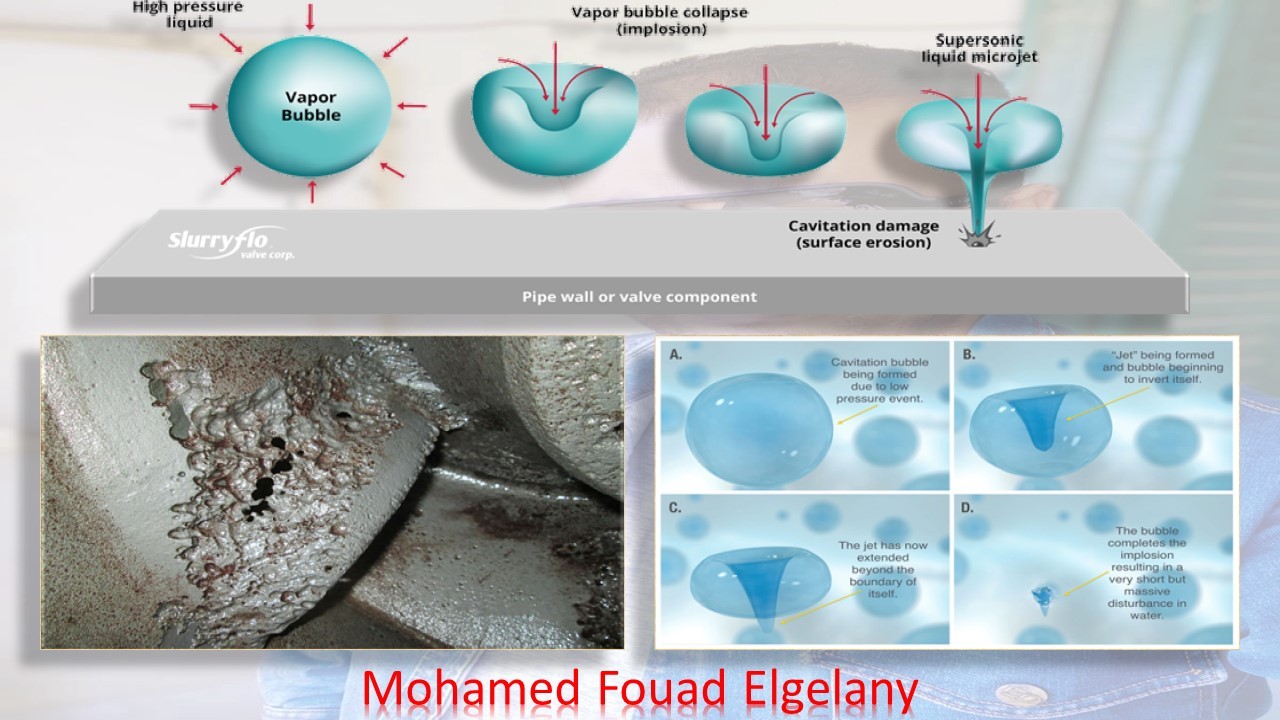
Cavitation: Understanding the Phenomenon and Its Implications
Cavitation is a dynamic fluid phenomenon that occurs in liquids when local static pressure drops below the vapor pressure, leading to the formation and subsequent collapse of vapor bubbles. This process generates intense shockwaves, causing damage to equipment and impacting overall system efficiency. Understanding cavitation, its causes, and preventive measures is crucial in various industrial applications.
Causes of Cavitation:
1. High Velocity Flows:
- Cavitation often occurs in high-velocity fluid flows, such as those in pumps, propellers, or control valves. Rapid changes in fluid velocity create areas of low pressure, initiating cavitation.
2. Liquid Turbulence:
- Turbulent liquid conditions contribute to cavitation. Agitation, abrupt changes in flow direction, or the presence of obstacles can induce turbulence, leading to localized pressure drops.
3. Liquid Temperature:
- Elevated liquid temperatures reduce the pressure threshold for cavitation. Hot liquids have lower vapor pressures, making them more susceptible to bubble formation.
4. Impeller Design:
- In pump systems, improper impeller design or sizing can cause cavitation. The impeller's rotational speed and geometry influence the flow patterns, impacting pressure distribution.
Implications of Cavitation:
1. Equipment Damage:
- Cavitation-induced bubble collapse generates intense shockwaves, leading to erosion and pitting on surfaces exposed to the cavitated fluid. This can result in extensive damage to pump impellers, propellers, and control valves.
2. Reduced Efficiency:
- Cavitation disrupts the smooth flow of liquid, reducing the efficiency of fluid-handling equipment. Energy losses occur as a significant portion of the energy is dissipated during bubble collapse.
3. Noise and Vibration:
- Cavitation produces characteristic noise and vibration in affected equipment. Monitoring these signals can be an early indicator of cavitation-related issues.
4. Material Fatigue:
- The repetitive nature of cavitation-induced shockwaves can lead to material fatigue, compromising the structural integrity of affected components over time.
Preventive Measures:
1. Optimized System Design:
- Properly design and size fluid-handling systems, considering flow rates, pressure differentials, and temperature conditions to minimize cavitation risks.
2. Regular Maintenance:
- Implement routine maintenance schedules to inspect and replace worn-out components. Regularly check impellers, propellers, and control valves for signs of cavitation damage.
3. Pressure Control:
- Install pressure control devices to maintain optimal pressure levels and prevent localized pressure drops.
4. Material Selection:
- Choose materials with resistance to cavitation erosion for components exposed to high-velocity flows.
5. Flow Visualization:
- Employ flow visualization techniques to identify areas of turbulence and address them in the system design.
Understanding cavitation, its causes, and adopting preventive measures is essential for maintaining the longevity and efficiency of fluid-handling systems in various industrial applications.